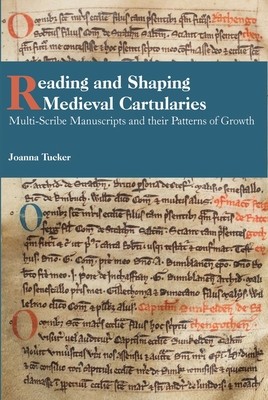
- We will send in 10–14 business days.
- Author: Joanna Tucker
- Publisher: Boydell Press
- ISBN-10: 1783274786
- ISBN-13: 9781783274789
- Format: 15.6 x 23.4 x 1.9 cm, hardcover
- Language: English
- SAVE -10% with code: EXTRA
Reviews
Description
The physical nature of the medieval cartulary examined alongside its textual contents.
Medieval cartularies are one of the most significant sources for a historian of the Middle Ages. Once viewed as simply repositories of charters, cartularies are now regarded as carefully curated collections of texts whose contents and arrangement reflect the immediate concerns and archival environment of the communities that created them. One feature of the cartulary in particular that has not been studied so fully is its materiality: the fact that it is a manuscript. Consequently, it has not been recognised that many cartularies are multi-scribe manuscripts which "grew" for many decades after their initial creation, both physically and textually.This book offers a new methodology which engages with multi-scribe contributions in two cartulary manuscripts: the oldest cartularies of Glasgow Cathedral and Lindores Abbey. It integrates the physical and textual features of the manuscripts in order to analyse how and why they grew in stages across time. Applying this methodology reveals two communities that took an active approach to reading and shaping their cartularies, treating these manuscripts as a shared space. This raises fundamental questions about the definition of cartularies and how they functioned, their relationship to archives of single-sheet documents, and as sources for institutional identity. It therefore takes a fresh look at the "genre" ofmedieval cartularies through the eyes of the manuscripts themselves, and what this can reveal about their medieval scribes and readers.
EXTRA 10 % discount with code: EXTRA
The promotion ends in 17d.10:33:48
The discount code is valid when purchasing from 10 €. Discounts do not stack.
- Author: Joanna Tucker
- Publisher: Boydell Press
- ISBN-10: 1783274786
- ISBN-13: 9781783274789
- Format: 15.6 x 23.4 x 1.9 cm, hardcover
- Language: English English
The physical nature of the medieval cartulary examined alongside its textual contents.
Medieval cartularies are one of the most significant sources for a historian of the Middle Ages. Once viewed as simply repositories of charters, cartularies are now regarded as carefully curated collections of texts whose contents and arrangement reflect the immediate concerns and archival environment of the communities that created them. One feature of the cartulary in particular that has not been studied so fully is its materiality: the fact that it is a manuscript. Consequently, it has not been recognised that many cartularies are multi-scribe manuscripts which "grew" for many decades after their initial creation, both physically and textually.This book offers a new methodology which engages with multi-scribe contributions in two cartulary manuscripts: the oldest cartularies of Glasgow Cathedral and Lindores Abbey. It integrates the physical and textual features of the manuscripts in order to analyse how and why they grew in stages across time. Applying this methodology reveals two communities that took an active approach to reading and shaping their cartularies, treating these manuscripts as a shared space. This raises fundamental questions about the definition of cartularies and how they functioned, their relationship to archives of single-sheet documents, and as sources for institutional identity. It therefore takes a fresh look at the "genre" ofmedieval cartularies through the eyes of the manuscripts themselves, and what this can reveal about their medieval scribes and readers.


Reviews